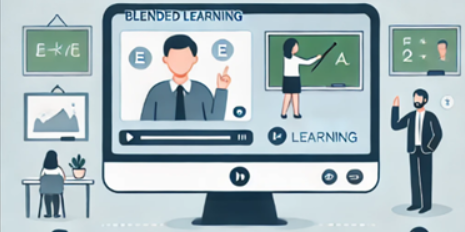When we speak about managing the skills of your network, we are referring to a continuous process. Many training programs go through their protocol and mark the members of their workforce off as “competent” once they complete a specific area of training. Once competency is achieved, those programs rarely go back to ensure that their current level of competency is still considered to be sufficient for the position.
Extended enterprises are faced with many different events that could cause training to be outdated or no longer relevant to our network members. Because of this, we must stay vigilant in ensuring that we are delivering the most up-to-date materials and certifications so that our members never fall out of the realm of being competent in their areas of expertise.
Because of the fluctuations in the required skills in our industry, OEMs and extended enterprises need an LMS that recognizes this hurdle and sets up measures to help prevent a lack of competency in any given area.
We understand that skills are not a static concept, and we expect them to change. LatitudeLearning is equipped to ensure that your network is receiving the most relevant training, information, and certifications necessary to be flexible in our dynamic industry.
The 3 Main Takeaways to Managing Enterprise Skills
After the heavy lifting of defining the enterprise-level skill profiles and rolling them out, the large-scale organization is complete, but the work is just starting. Managing those skills means ensuring they are being used throughout the organization. Training managers must verify that the training remains up-to-date and valuable as the business evolves.
Managing your training program at scale can ensure that you effectively utilize your workforce to achieve your defined business goals. However, as with any training program, you must be prepared to adapt to changing market conditions, emerging trends, and ongoing changes in technology, tools, and products that impact what it means to be skilled. This agility will help you remain competitive and innovative and provide continuous growth.
There are three main areas on which to focus when managing the skills of your network at the enterprise scale. By ensuring that each one is addressed, you can take the next steps of measuring the impact of your training program on your business.
Adapting the Skills of Your Network
As the industry evolves, new skills may be needed to perform essential job functions. These skills have to be taught, learned, and implemented. We apply this in cases of introducing emerging skills while transitioning out old skills to maintain the appropriate definition of “competent” in any given area.
One of the most common areas we see this in is with newer technologies. As new technologies emerge, new skills are required to maintain competence in the areas in which they are used. Once we are competent in newer technologies, we can sunset the older technologies and the skills that went with them.
For example, to be a competent automotive technician ten years ago, you didn’t need to have any understanding of hybrid electric powertrains. Five years ago, you didn’t require any understanding of all-electric powertrains. Today, it is an absolute requirement for technicians to know the basics of all electric-based powertrains, if only to ensure they can work safely around them when the opportunity arises. Management of this transition in competency is crucial in today’s learning environments.
Managing the skills of your enterprise requires it to be done at scale with learning technologies that allow you to keep your network members skilled in a dynamic fashion. LatitudeLearning excels at ensuring the continuous management of skills in an ever-evolving industry.
Maintaining Relevance
The training program should be relevant to the skills that network members need to perform their roles effectively. It should be aligned with the strategic goals of the organization and should address the specific needs of different roles.
To maintain relevance, your training program should focus on skill development that is directly related to the roles and responsibilities of network members. Identify the competencies and skills required for the multiple roles within the extended enterprise. Define which of these can be developed with on-the-job training and which can be administered via Learning Management System (LMS).
Don’t train what doesn’t need to be trained. If a location doesn’t service all brands, don’t mandate that location takes training that doesn’t apply to them. Equally, if a person holds multiple roles in an organization, like service manager, service advisor, and part-time technician, then that individual should be required to complete and demonstrate competency in all the job functions the perform, as defined in the comprehensive skill-based model.
When considering the development of skills, your training program should be designed to address both the current and future needs of the business. By identifying emerging trends and technologies that may impact the organization’s workforce development needs, you can anticipate how your training program will need to evolve.
When such an evolution is required, your training program should be customizable to meet the unique needs of different partners within the network. This may involve creating different training modules for different areas and the changes their skills may face. Sales, service, and dealerships will all require different modules with differing levels of competency within each area.
Ensuring Efficacy
The training program should be effective in achieving the desired outcomes of managing the skills in your network. It should improve network performance, impact the predefined KPIs, and contribute to the organization’s overall success.
Define learning outcomes that align with skills needed by network members. Choose outcomes that are measurable and use them to help evaluate the effectiveness of your training program. These can be measured with assessments, surveys, and performance evaluations.
Overall program evaluations are key to determining the effectiveness of your training program. Regular evaluations and be performed by analyzing performance data and soliciting feedback from partners or stakeholders on the defined measurables of the training program
Because of the dynamic components in extended enterprises, training programs should be continuously improved based on feedback, evaluation results, and changes in the industry. When faced with the necessity for change, revise course materials, adjust delivery methods, or develop additional or new training programs. These improvements will allow you to address emerging needs and maintain a competitive edge in your market.
LatitudeLearning Excels in Managing the Skills of Your Enterprise
Dynamic management of a training program can be a challenge for many learning management systems. Other LMS platforms may allow you to implement and use basic skills as a starting point of competency for a couple of years, but you will be required to renew and update those training areas to ensure there is no dropoff in competence or lapse in compliance. However, LatitudeLearning excels in this area. Robust features and functionality help you easily develop and manage your training programs for the scale of your enterprise.
LatitudeLearning LMS can create and manage multiple training programs and curricula simultaneously. This makes it easy to develop training programs for different audiences, such as partners or customers. In addition, each program can be easily updated and customized so that learners always have the most up-to-date training materials. Where other learning management platforms may fall short by allowing skills to lapse, LatitudeLearning provides you with the tools to develop a training program that is as dynamic as our industry.
Another strength of LatitudeLearning LMS is its ability to deliver practical training content dynamically. The LMS can provide additional learning materials based on learner needs and preferences. In addition, the system includes various tools for tracking learner progress and performance. This allows administrators to customize the training program in real-time to better meet learner needs.
LatitudeLearning also provides advanced reporting and analytics tools. Administrators can track learner progress and identify areas where training may need to be improved. This data can be used to make real-time adjustments to the training program. This improvement provides learners with the best possible training experience.
LatitudeLearning excels in the dynamic management of training programs. By defining the path of how training will change, introducing new concepts, and adjusting for regional and area needs, you can create a training program equipped to handle the fluctuations in skill sets.
This flexibility allows you to introduce the changes constantly so that as skills change, your program maintains the ability to represent the appropriate competency desired. By leveraging the advanced features and functionality of the system, organizations can ensure that they are on the path to increased business success.
LatutudeLearning understands that these skill requirements are always changing and must be represented in your training program. Let us manage the scale of your enterprise training program to bring your business goals back into focus.
Learn more in our ebook, Certification, Compliance, and Competency.






[…] As the automotive industry races ahead with innovation, the skill gap becomes an ever-more pressing concern. With seasoned professionals retiring and new technologies demanding specialized skills, OEMs, vehicle service companies, and other skilled trades find themselves struggling to find qualified talent. […]
[…] that require continued training to maintain competency. Managing these skills and certifications on the scale of an extended enterprise can be challenging. A Learning Management System (LMS) can assist you with keeping track of skills, […]
[…] you factor in the changing landscape of new products, features, and technologies that OEMs and dealerships are constantly faced with, […]